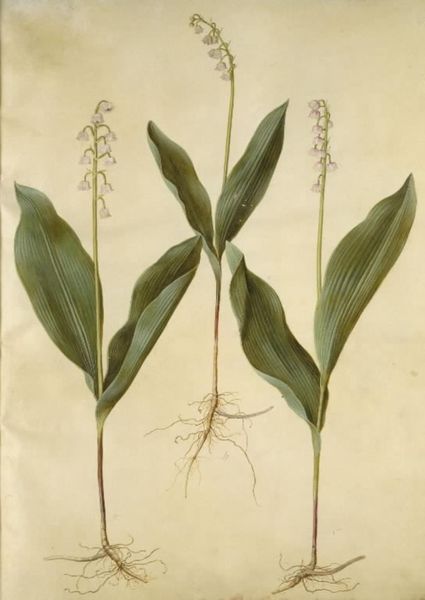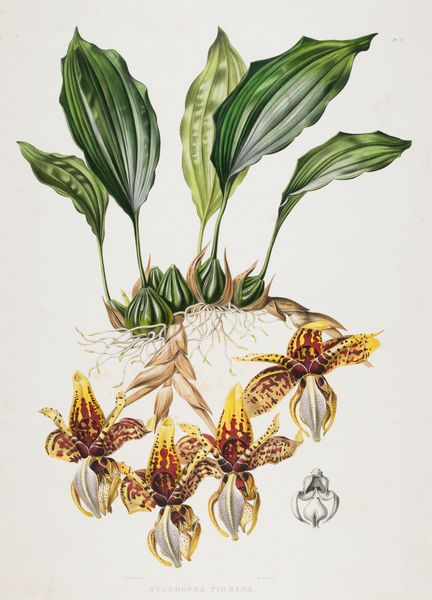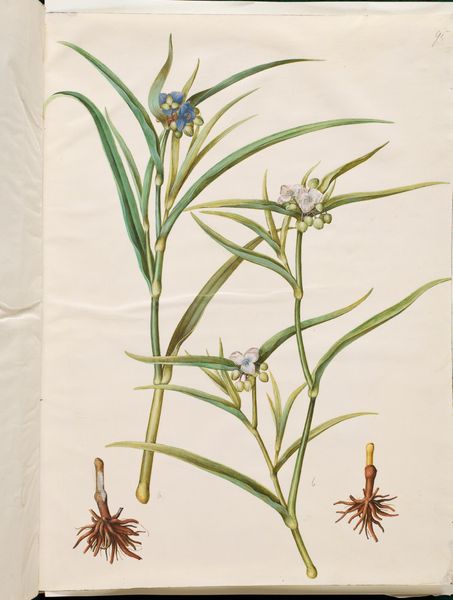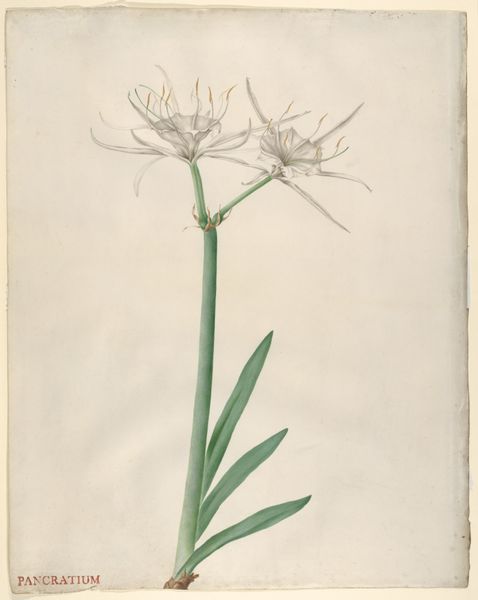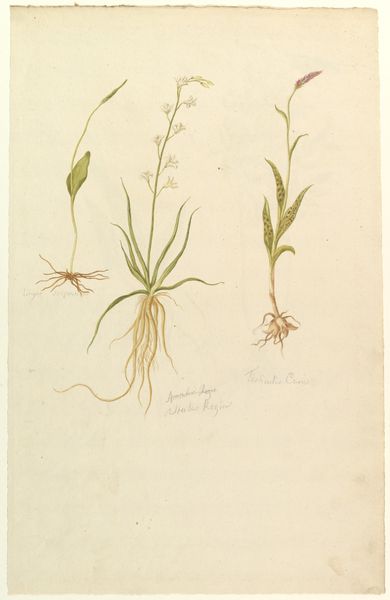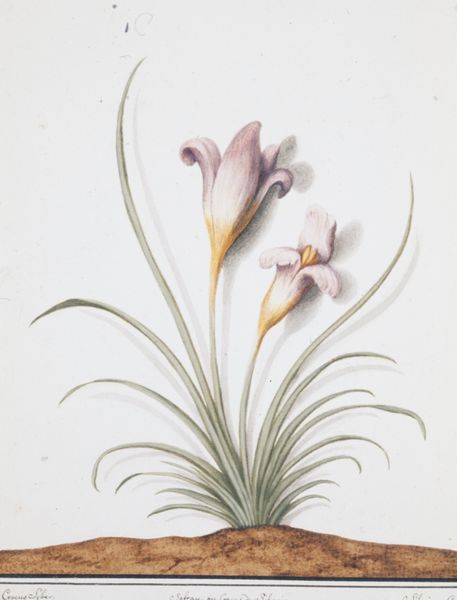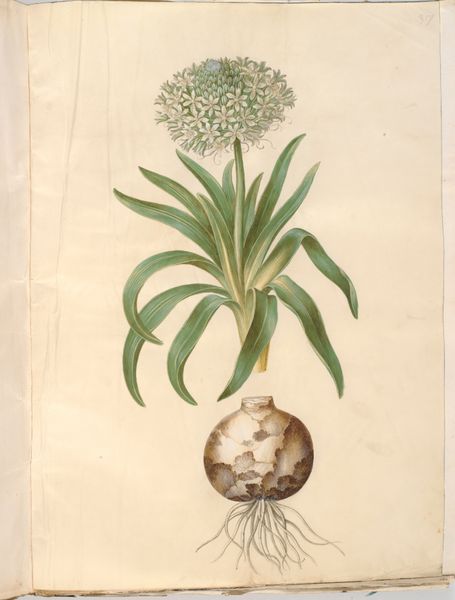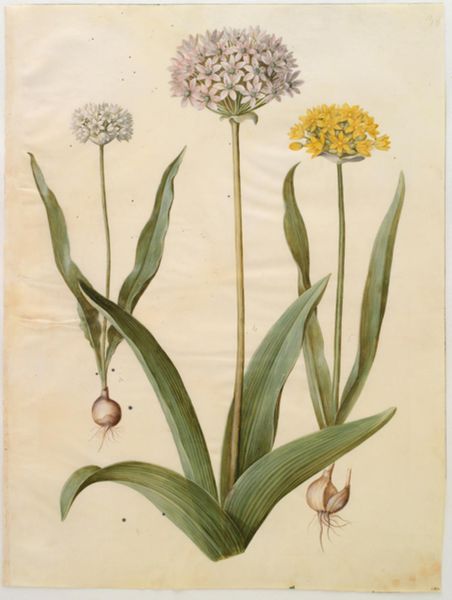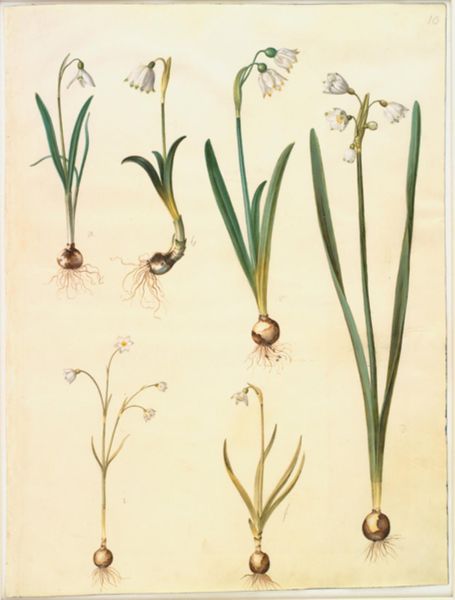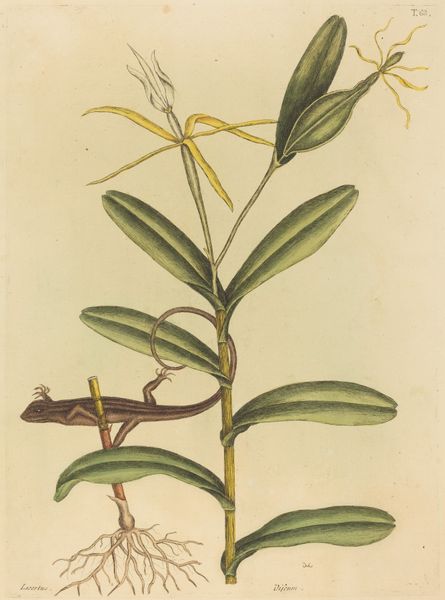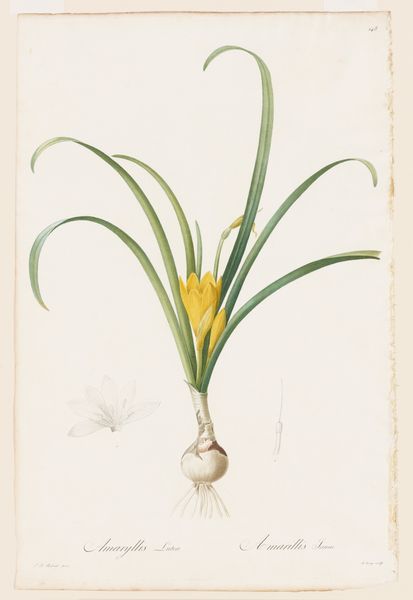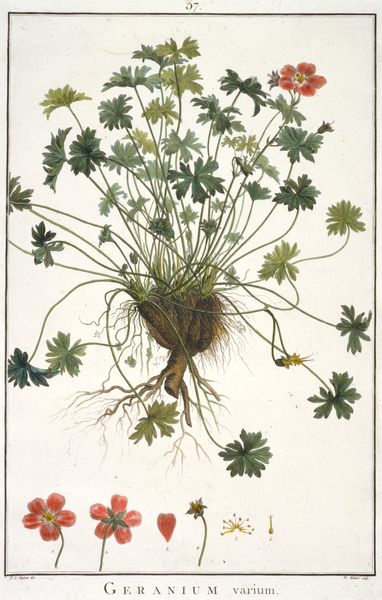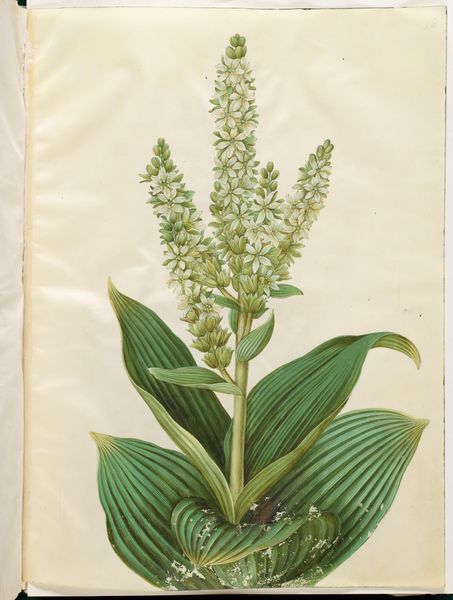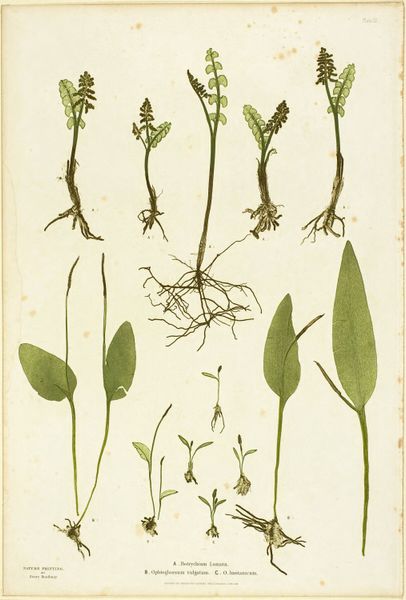
drawing, print, watercolor, pencil
#
drawing
# print
#
landscape
#
watercolor
#
pencil
#
botanical drawing
#
france
#
greenery
#
watercolour illustration
#
botanical art
#
watercolor
Dimensions: 21 x 19 in. (53.34 x 48.26 cm) (sheet, margins cut)
Copyright: Public Domain
Curator: Up next, we have an early 19th-century botanical illustration entitled "Convallaria majalis," more commonly known as Lily of the Valley. The piece, which resides here at the Minneapolis Institute of Art, dates back to 1808. It appears to be executed with pencil, watercolor, and perhaps some printing techniques. Editor: The delicacy of the watercolor is immediately striking. You can almost feel the fragile texture of the leaves and petals, and it is also interesting that all elements of the flower appear, roots and all. It conveys such a sense of gentle, unassuming beauty. Curator: Absolutely. This botanical rendering exists within a broader tradition, especially popular in France at the time, of documenting and categorizing the natural world through artistic means. Consider the societal function—a detailed, aesthetically pleasing record for scientific, commercial, and even colonial interests. Editor: It raises interesting questions about the production of such imagery. Was this artist also involved in the physical cultivation or study of these plants? It feels crucial to understand their engagement with the material reality of the lily of the valley, the labor involved in cultivating, gathering, and then translating it onto paper. Curator: It is important to recognize how presentation can dictate audience reception. The lily of the valley, due to royal association, became a recurring feature in art institutions, therefore making its art more visible than others. Editor: Precisely! We need to see beyond the surface-level charm and question the processes involved. Who was benefiting from its dissemination, and how did this artistic rendering influence its commodity value? This piece really encapsulates those intersection of labor, material, and aesthetic presentation that can illuminate this period. Curator: A stimulating discussion that moves us to think deeply. Editor: Yes, taking note of who benefits and is represented in artworks is a step to making this art accessible.
Comments
minneapolisinstituteofart about 2 years ago
⋮
Botanical illustrators working in the fifteenth and sixteenth centuries devoted themselves to the medicinal qualities of plants and sought to render plant structure and function as precisely as they could. Later, European explorers brought specimens back from exotic locales, and artists carefully reproduced them for an audience fascinated by new discoveries. By the eighteenth and nineteenth centuries, artists had shifted their emphasis from scientific illustration to the innate beauty of the plant or flower. The Minneapolis Institute of Arts is fortunate to possess an impressive collection of more than 2,000 botanical prints and drawings.
Join the conversation
Join millions of artists and users on Artera today and experience the ultimate creative platform.
